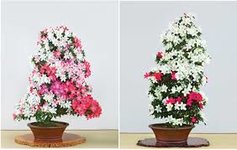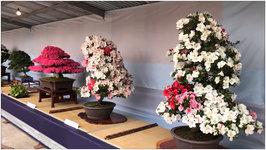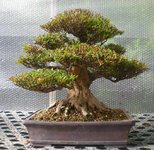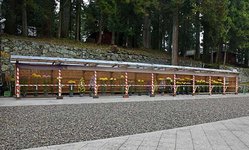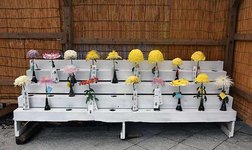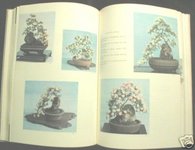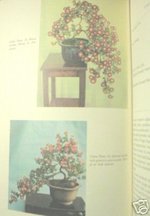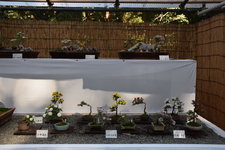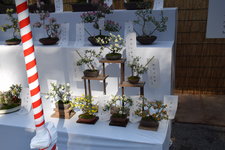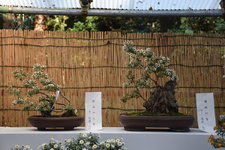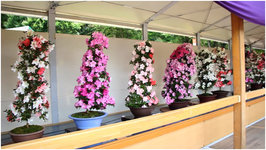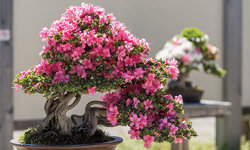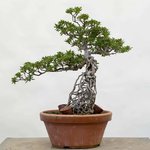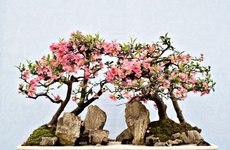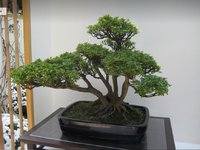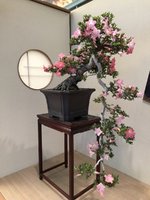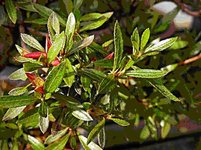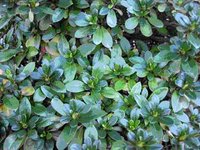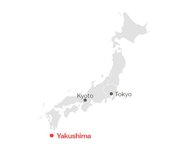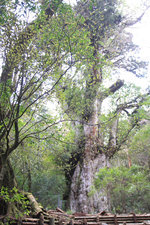I am new to this very nice forum.
I've seen that there are occasional discussions between members about azaleas.
The question that seems to come up regularly is: "Are they real bonsai?"
This question does not seem to be debated in Europe at least not in Belgium or France where they are admitted as such and in their own right as bonsai.
Azaleas, in the broadest sense of the word, have been my passion for many years and these discussions caught my attention.
So I naturally looked for the reason of these questions and I may have found where they came from.
There are many families of azaleas, two of them among others are regularly grown in pots. I am talking about Satsuki azaleas and Tsutsuji azaleas.
I think that a confusion between these two families of azaleas is at the root of this "problem".
Unfortunately, I can't bring any certainty, so these are only hypothesis.
It is up to you to see.
What are the differences between these azaleas?
At first sight, if you don't pay attention, there are none, they are two very similar families of azaleas.
They both make a lot of flowers, they grow very well in acidic pots, they can be pruned very well and there are many varieties...
However, if you look closely, you will notice that there are several points that differentiate them.
For example, the flowering period, I already talked about it in the history.
In general, Satsuki bloom about 30 days after Tsutsuji
Tsutsuji are spring flowering azaleas about 30 days before spring.
These are of course generalities, because the blooming also depends on the weather and the temperature.
It is therefore possible to see, as it is often the case during exhibitions, satsuki in advance of their blooming period, just as it is common to see Tsutsuji late in their blooming. It is also a question of preparation when exhibiting.
But there are other differences, the following two are natural.
The trunks.
Satsuki tend to form large nebari and can form large trunks.
They are basal.
Tsutsuji remain slimmer, they don't form big trunks and wide nebari.
They are of course basal like all rhododendrons, but when looking at them one has the impression that they are rather apical because of their slender shape.
The branches.
The branches of Satsuki branch much more easily than Tsutsuji.
There are also differences in the way we do it, because the Japanese use them differently.
Satsuki are grown almost exclusively in pots.
Tsutsuji are also grown in pots, but also as hedges or in a decorative way in gardens or parks as you can see here.
Tsutsuji Matsuri: an ode to the beauty of azaleas
https://voyapon.com/fr/tsutsuji-matsuri-azalees-tokyo-nezu/
Thousands of azaleas at the Tsutsuji Matsuri in the middle of Tokyo
- Kasama Tsutsuji Park
https://zekkeijapan.com/spot/index/939/
Their shapes.
Satsuki azaleas are worked by bonsaika in all bonsai styles.
Their shapes are as important if not more important than their blooms.
Tsutsuji are generally presented with rather thin, high and straight trunks, sometimes we also meet some with spring-like trunks.

They are above all worked for the beauty and the quality of their flowers.
About the shapes, Tsustuji's is always slender.
For the amateurs or the beginners, the Bunjin-gi style of straight form is the one which is the closest to the Tsutsuji form, but you should not be mistaken, it has nothing to do with the literati form.
The Tachi-Agari or Tachiagari which is the part of the trunk which goes from the base of the trunk (nebari) to the first branch (ichi- no- eda) is quite different. The one in Bujin-ji usually goes up much higher.
The number of branches is also very different. On the Bunjin-gi, they are sparse while they are numerous on the Tsutsuji, so the empty spaces are extremely reduced if not non-existent.
Their pots.
The shape of the satsuki pots varies according to their style.
Tsutsuji's pots are all of the same shape.
Their exhibitions.
Tsutsuji are only displayed when they are in bloom.
Satsuki can be displayed without flowers.
These are the few major points that characterize them, but nowadays, there are almost only purists who differentiate them, we see now in all azalea exhibitions satsuki next to Tsutsuji. Maybe this is where the problem comes from.
I don't know how to prove it, but I think that the "Satsuki bonsai or not bonsai" problem comes from there.
I think that this non-recognition of satsuki as bonsai comes from the fact that bonsai lovers who did not know azaleas confuse these two families so close to each other.
We tend to agree with them if we only take into account what characterizes the tsutsuji, because if we only take into account these elements, we can understand that there is confusion.
- Tsutsuji remain slender, they do not form a big trunk and a large nebari.
- The branches of Tsutsuji branch out much less than those of satsuki.
- Tsutsuji are also grown in pots, but also as hedges or as decorative plants in gardens or parks as seen here.
- Tsutsuji pots are all of the same shape.
- Tsutsuji are displayed only when they are in bloom.
- They all have more or less the same shape (high, slender and straight)
- Little or no empty spaces
As I have just written: "today, there is almost only the purists who differentiate them..." and I can understand that the amateurs who have in front of them a Tsutsuji azalea say that the azaleas look like a bonsai, but that it is not really a bonsai.
Simply because they confuse Satsuki and Tsutsuji or simply ignore the existence of these two families.
Again, what I say is just a hypothesis.
I would like to point out that the Tsutsuji are just as honorable as the satsuki.
They are quite worthy of interest and are wonders... in flowers.
Here are some pictures of Satsuki and Tsutsuji which, I hope, will help you to understand my explanations.
Satsuki.

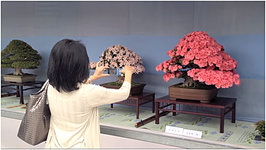


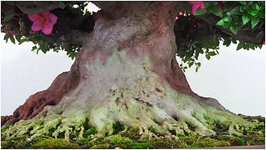
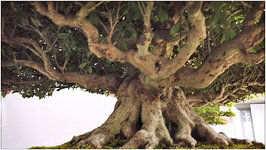
I've seen that there are occasional discussions between members about azaleas.
The question that seems to come up regularly is: "Are they real bonsai?"
This question does not seem to be debated in Europe at least not in Belgium or France where they are admitted as such and in their own right as bonsai.
Azaleas, in the broadest sense of the word, have been my passion for many years and these discussions caught my attention.
So I naturally looked for the reason of these questions and I may have found where they came from.
There are many families of azaleas, two of them among others are regularly grown in pots. I am talking about Satsuki azaleas and Tsutsuji azaleas.
I think that a confusion between these two families of azaleas is at the root of this "problem".
Unfortunately, I can't bring any certainty, so these are only hypothesis.
It is up to you to see.
What are the differences between these azaleas?
At first sight, if you don't pay attention, there are none, they are two very similar families of azaleas.
They both make a lot of flowers, they grow very well in acidic pots, they can be pruned very well and there are many varieties...
However, if you look closely, you will notice that there are several points that differentiate them.
For example, the flowering period, I already talked about it in the history.
In general, Satsuki bloom about 30 days after Tsutsuji
Tsutsuji are spring flowering azaleas about 30 days before spring.
These are of course generalities, because the blooming also depends on the weather and the temperature.
It is therefore possible to see, as it is often the case during exhibitions, satsuki in advance of their blooming period, just as it is common to see Tsutsuji late in their blooming. It is also a question of preparation when exhibiting.
But there are other differences, the following two are natural.
The trunks.
Satsuki tend to form large nebari and can form large trunks.
They are basal.
Tsutsuji remain slimmer, they don't form big trunks and wide nebari.
They are of course basal like all rhododendrons, but when looking at them one has the impression that they are rather apical because of their slender shape.
The branches.
The branches of Satsuki branch much more easily than Tsutsuji.
There are also differences in the way we do it, because the Japanese use them differently.
Satsuki are grown almost exclusively in pots.
Tsutsuji are also grown in pots, but also as hedges or in a decorative way in gardens or parks as you can see here.
Tsutsuji Matsuri: an ode to the beauty of azaleas
https://voyapon.com/fr/tsutsuji-matsuri-azalees-tokyo-nezu/
Thousands of azaleas at the Tsutsuji Matsuri in the middle of Tokyo
- Kasama Tsutsuji Park
https://zekkeijapan.com/spot/index/939/
Their shapes.
Satsuki azaleas are worked by bonsaika in all bonsai styles.
Their shapes are as important if not more important than their blooms.
Tsutsuji are generally presented with rather thin, high and straight trunks, sometimes we also meet some with spring-like trunks.

They are above all worked for the beauty and the quality of their flowers.
About the shapes, Tsustuji's is always slender.
For the amateurs or the beginners, the Bunjin-gi style of straight form is the one which is the closest to the Tsutsuji form, but you should not be mistaken, it has nothing to do with the literati form.
The Tachi-Agari or Tachiagari which is the part of the trunk which goes from the base of the trunk (nebari) to the first branch (ichi- no- eda) is quite different. The one in Bujin-ji usually goes up much higher.
The number of branches is also very different. On the Bunjin-gi, they are sparse while they are numerous on the Tsutsuji, so the empty spaces are extremely reduced if not non-existent.
Their pots.
The shape of the satsuki pots varies according to their style.
Tsutsuji's pots are all of the same shape.
Their exhibitions.
Tsutsuji are only displayed when they are in bloom.
Satsuki can be displayed without flowers.
These are the few major points that characterize them, but nowadays, there are almost only purists who differentiate them, we see now in all azalea exhibitions satsuki next to Tsutsuji. Maybe this is where the problem comes from.
I don't know how to prove it, but I think that the "Satsuki bonsai or not bonsai" problem comes from there.
I think that this non-recognition of satsuki as bonsai comes from the fact that bonsai lovers who did not know azaleas confuse these two families so close to each other.
We tend to agree with them if we only take into account what characterizes the tsutsuji, because if we only take into account these elements, we can understand that there is confusion.
- Tsutsuji remain slender, they do not form a big trunk and a large nebari.
- The branches of Tsutsuji branch out much less than those of satsuki.
- Tsutsuji are also grown in pots, but also as hedges or as decorative plants in gardens or parks as seen here.
- Tsutsuji pots are all of the same shape.
- Tsutsuji are displayed only when they are in bloom.
- They all have more or less the same shape (high, slender and straight)
- Little or no empty spaces
As I have just written: "today, there is almost only the purists who differentiate them..." and I can understand that the amateurs who have in front of them a Tsutsuji azalea say that the azaleas look like a bonsai, but that it is not really a bonsai.
Simply because they confuse Satsuki and Tsutsuji or simply ignore the existence of these two families.
Again, what I say is just a hypothesis.
I would like to point out that the Tsutsuji are just as honorable as the satsuki.
They are quite worthy of interest and are wonders... in flowers.
Here are some pictures of Satsuki and Tsutsuji which, I hope, will help you to understand my explanations.
Satsuki.









